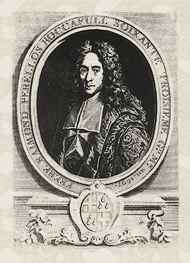 There is not doubt that the true vocation inspired by the exemplary life of Fra Gerard, and the international influence and prestige attained by Raymond du Puy, were the main determining causes in the fact that as earlier as the year 1170, the King of Poland authorized the creation of a Commandery of Saint John endowed with a hospital and a chapel. Always under the Polish Kings protection, other commanderies emerged in diverse places such as Svernik-Starolessve (property of the Montmorency de Ligny-Luxembourg family), Ostrog (property of the Ostrogski family) etc., which after 1310 became the Priory of Poland.
There is not doubt that the true vocation inspired by the exemplary life of Fra Gerard, and the international influence and prestige attained by Raymond du Puy, were the main determining causes in the fact that as earlier as the year 1170, the King of Poland authorized the creation of a Commandery of Saint John endowed with a hospital and a chapel. Always under the Polish Kings protection, other commanderies emerged in diverse places such as Svernik-Starolessve (property of the Montmorency de Ligny-Luxembourg family), Ostrog (property of the Ostrogski family) etc., which after 1310 became the Priory of Poland.
In 1609, Prince Janusz Ostrogski, owner and hereditary Commander of the commandery of his name, last of the line of the Ruridik dynasty, bequeathed his extensive estate to this Autonomous Priory and Hereditary Commandery.
In 1711, King Stanislaus I and Grand Master Raymond Perellos signed an agreement reaffirming the existence of the Autonomous Priory of Poland.
Particular characteristics of this Priory were that Commanders and Knights were not required to observe celibacy and that foreigners could be received in this Priory, “Suo Jure”, as Knights of the Order.
The invasion of Poland, and subsequent partition of its territory put under Russian control a large part of the properties of the Priory. To vindicate the rights of the Order, negotiations began at the Russian Imperial Court with Catherine the Great, being the Minister of the Order Bailiff Count Julius Renatus Litta.
A sentence of the 17th of December, 1899, of the Civil Tribunal of Saint Petersbourg, recognizes the hereditary rights of the Commandery of Svernik-Starolessve of the Order of Saint John of Jerusalem, said of Malta, in the person of H.R.& I.H. Prince Nicholas de Ligny-Luxembourg as the last scion of the House of Ligny-Luxembourg.






